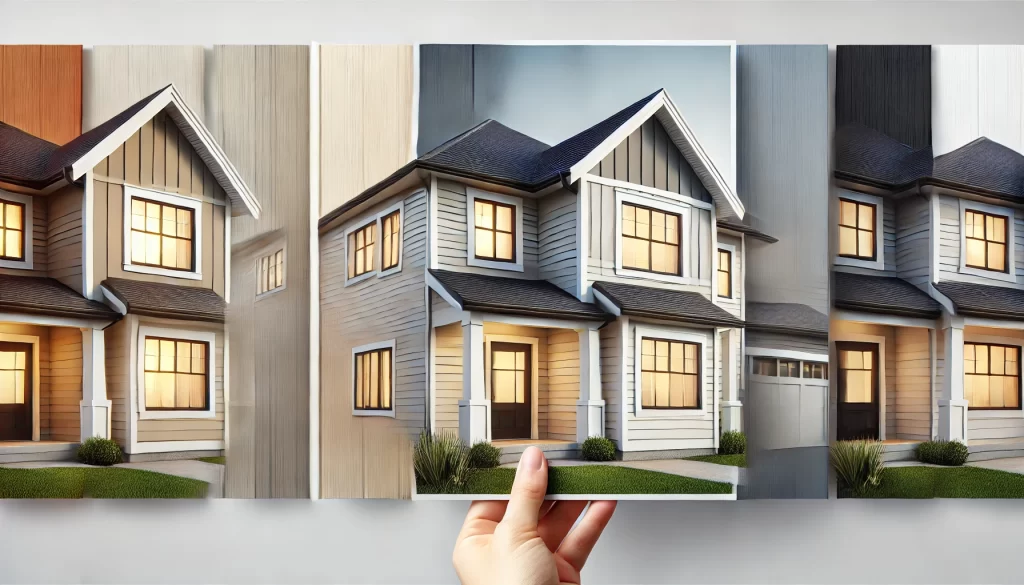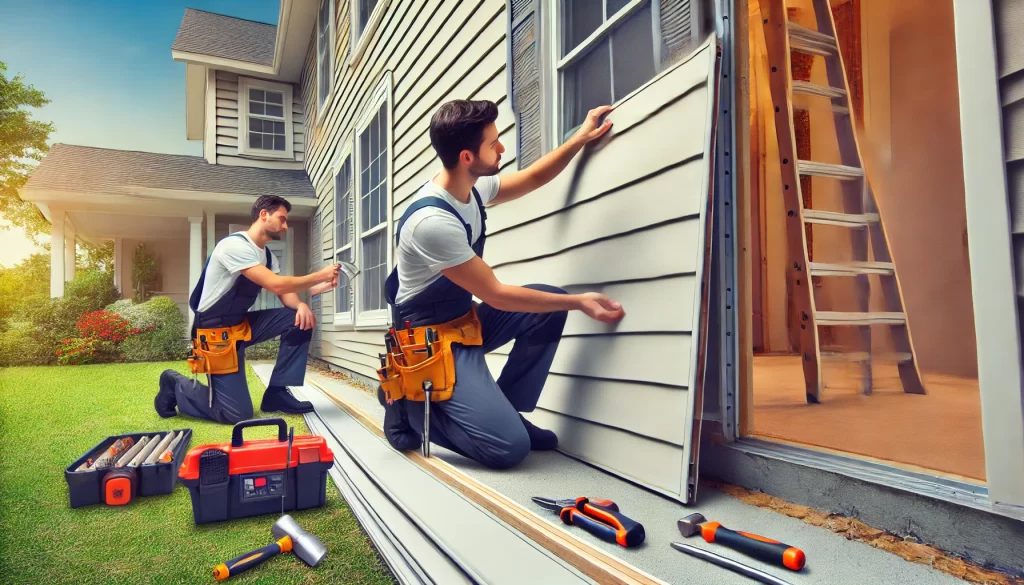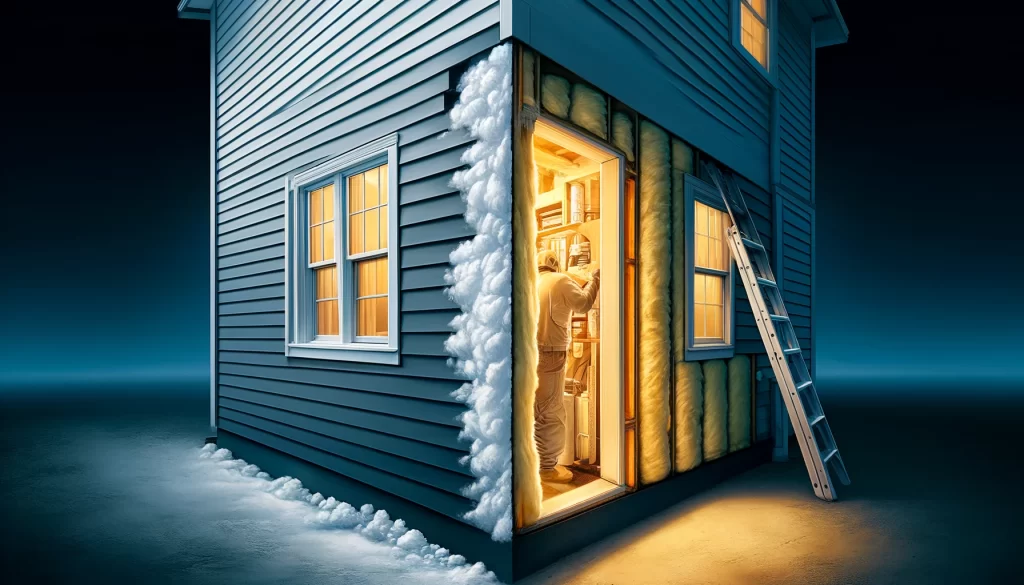Table of Contents
Vinyl siding is one of the most popular choices for homeowners looking to improve the appearance and durability of their homes. But how much does vinyl siding cost? This is a question many people ask when planning a home renovation. In this guide, we will break down the factors that impact how much does vinyl siding cost, provide some valuable tips to save money and explain the installation process.
Whether you’re doing a complete house makeover or just replacing a few panels, understanding how much does vinyl siding cost can help you make the best decision for your budget. By the end of this guide, you’ll have a clear picture of how much does vinyl siding cost and how to approach your project.
What Is Vinyl Siding and Why Is It Popular?

It’s designed to mimic the look of wood or other materials while being more affordable and low maintenance. But why is it so popular?
One reason is its durability. Unlike wood, vinyl siding doesn’t rot, peel, or warp. It’s also resistant to pests, making it a long-lasting option for homes in all climates. Additionally, vinyl siding comes in many colors and styles, allowing homeowners to customize their home’s appearance. These benefits make vinyl siding a go-to choice for many homeowners.
How Much Does Vinyl Siding Cost? Breaking Down the Factors
So, how much does vinyl siding cost? The answer depends on several factors. Here’s a breakdown:
Cost of Vinyl Siding Per Square Foot
Vinyl siding costs typically range between $2 to $10 per square foot. The exact price will depend on the quality of the siding, the manufacturer, and where you buy it. Bare vinyl siding tends to be more affordable, while premium vinyl can come with extra features like better insulation or resistance to harsh weather.
Size of the Home
Naturally, the size of your home will significantly influence the total cost. A small one-story home will need less siding than a large two-story home. On average, siding in a typical home might require 1,000 to 2,500 square feet of material, which can raise or lower the overall price.
Style and Thickness of Vinyl Siding
Vinyl siding comes in various styles and thicknesses. Popular styles include clapboard, Dutch lap, and vertical siding, each offering different looks and price points. Homeowners should also consider whether they want insulated siding, which can save on energy costs but may increase the upfront investment.
Labor and Installation Costs
If you hire professionals to install the siding, you must factor in labor costs. Professional installation can range from $1 to $5 per square foot, depending on where you live and the job’s complexity. Labor costs can increase if your home has multiple stories or unusual features that require special attention.
How to Save Money on Vinyl Siding Costs

Everyone wants to save money, especially on home improvement projects. To help you reduce expenses without sacrificing quality, it’s essential first to understand how much does vinyl siding cost and then look for intelligent ways to cut costs, such as shopping around for materials, doing some of the work yourself, and choosing simpler styles.
Shop Around for Materials
Prices for vinyl siding can vary widely between manufacturers and retailers. Take the time to compare prices and shop during sales or off-season.
Do Some of the Work Yourself
You can handle part of the installation yourself if you have handyperson skills. Removing old siding or prepping the area can reduce labor costs even if you’re not installing the siding.
Choose Basic Styles
While premium vinyl siding options offer benefits like insulation or better durability, basic styles can still be a solid choice for most homeowners. Opting for a more straightforward, lower-cost vinyl can reduce the overall project price without significantly impacting the quality.
Consider Energy-Efficient Siding
Though it may seem counterintuitive, investing in energy-efficient vinyl siding might save you more money in the long run. Insulated vinyl can reduce energy bills by improving your home’s insulation, ultimately decreasing heating and cooling costs.
The Pros and Cons of Vinyl Siding
Like any building material, vinyl siding has its pros and cons. Understanding these can help you make a more informed decision when choosing siding for your home. When considering how much does vinyl siding cost, it’s essential to weigh the benefits, such as durability and low maintenance, against potential drawbacks like limited repair options and environmental concerns.
Pros of Vinyl Siding
- Low Maintenance: Vinyl doesn’t require painting, sealing, or significant upkeep.
- Affordability: Vinyl is one of the most affordable siding materials available.
- Durability: It can withstand harsh weather and won’t rot or warp.
Cons of Vinyl Siding
- Limited Repairs: While durable vinyl can crack or get damaged. Replacing sections of vinyl can sometimes be challenging.
- Environmental Concerns: Vinyl is made from PVC, which isn’t environmentally friendly and is difficult to recycle.
Is Installing Vinyl Siding a DIY Project?
Some homeowners may wonder if they can install vinyl siding to save money. The short answer is yes—installing vinyl siding as a DIY project is possible. However, remember that it requires time, effort, and skill. It can greatly reduce labor costs if you’re handy with tools and willing to learn.
However, hiring a professional can ensure the siding is installed correctly, especially if your home has more complex features or multiple stories. Poorly installed siding can lead to moisture issues, which may result in more costly repairs.
Additional Costs to Consider
When budgeting for your vinyl siding project, it’s essential to think about any additional costs that might pop up. For example, the cost of removing old siding, repairing underlying damage, and upgrading insulation can all affect the final price. So, when asking how much does vinyl siding cost, it’s essential to factor in these potential extra expenses to avoid any surprises.
Removal of Old Siding
If your home has existing siding, it will need to be removed before the new vinyl is installed. Removal costs can range from $1,000 to $3,000 depending on the material and the amount of labor required.
Repairing Underlying Damage
During the removal process, you may discover underlying damage, such as rotting wood or structural issues. These repairs will add to the total cost of the project but are necessary to ensure your home remains in good condition.
Also Read: How Much Does Dog Training Cost? Shocking Facts You Must Know!
Upgrading Insulation
If you live in an area with extreme temperatures, consider upgrading your home’s insulation while the siding is replaced. How much does vinyl siding cost? Insulated vinyl siding can help with energy efficiency, but adding insulation behind the siding can further improve your home’s ability to regulate temperature. Now that we’ve covered the details, you should have a clearer understanding of how much does vinyl siding cost.
While prices can vary based on factors like the size of your home, the style of siding you choose, and labor costs, you can expect to pay between $6,000 and $15,000 for an average house. By shopping around, considering basic styles, and even doing some work yourself, you can uncover significant savings. Understanding how much does vinyl siding cost will help you plan your budget effectively.
Whether you opt for professional installation or tackle the project yourself, knowing how much does vinyl siding cost is essential to making the best choice for your home.



